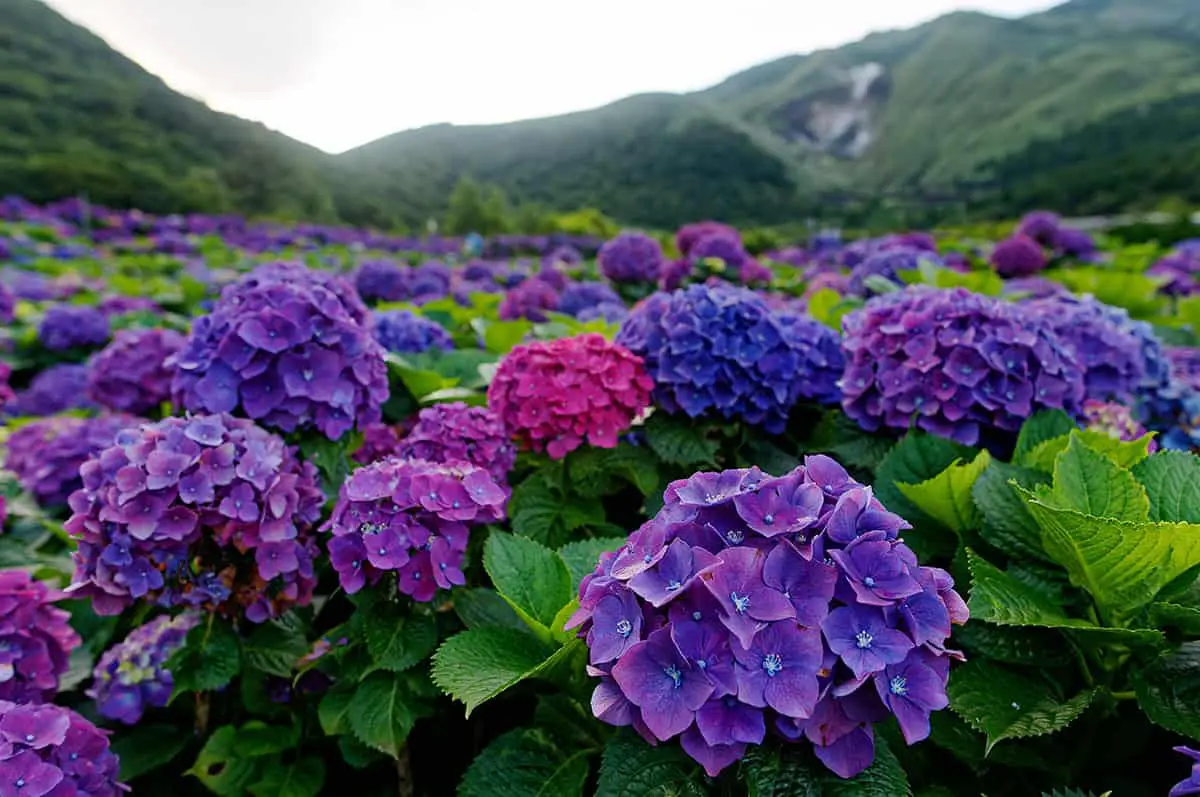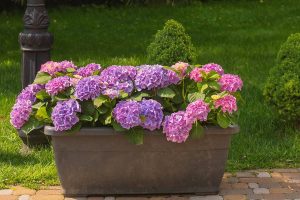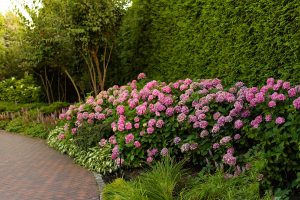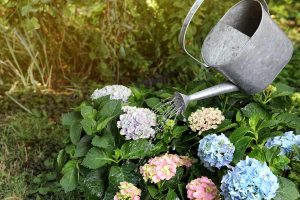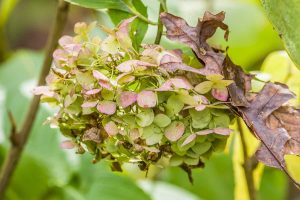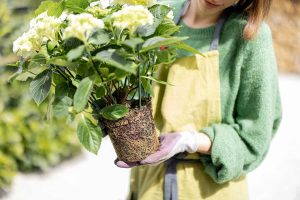You envisioned your hydrangeas bringing vibrant color to your garden all season long. However, as summer progresses, the blooms are fading faster than you anticipated. While this can be frustrating, proper care can keep your hydrangeas blooming beautifully. Read on to discover essential tips and techniques to ensure your hydrangeas stay lush and colorful from spring through fall.
Table of Contents
Choosing the Right Hydrangea Variety
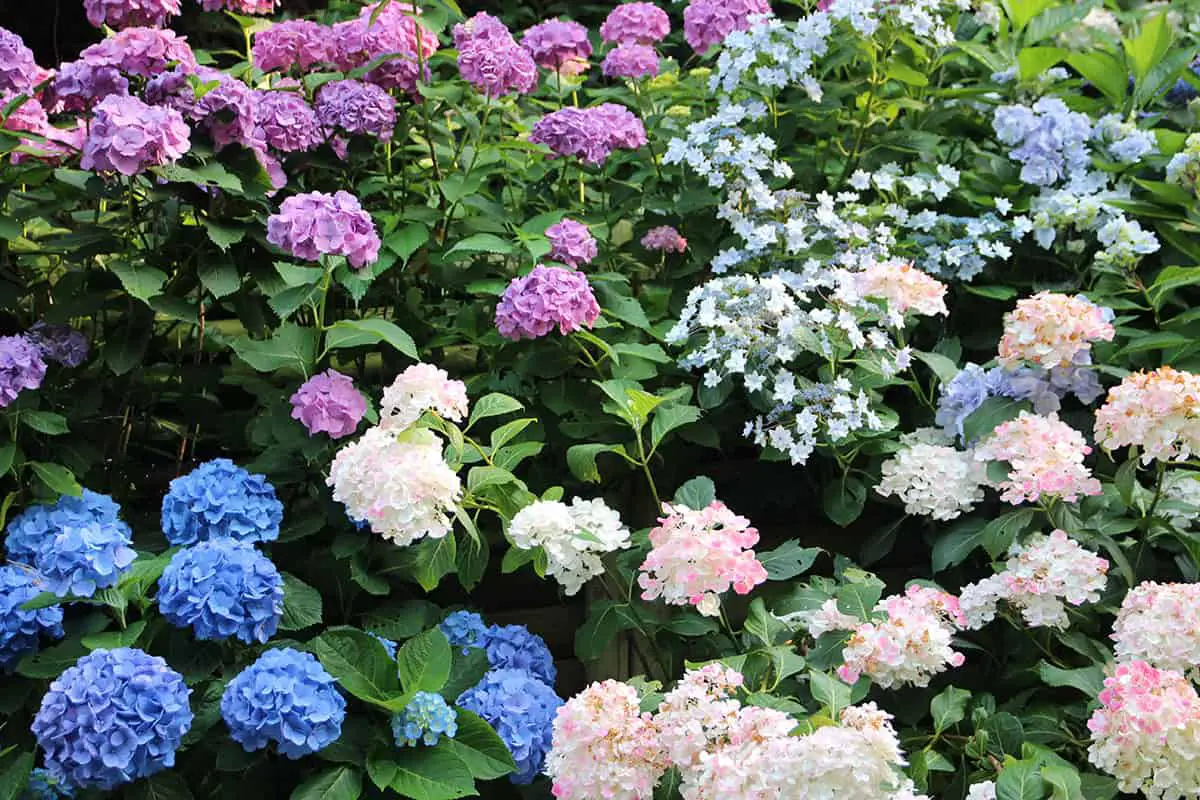
Begin by examining your climate and the amount of sunlight your garden receives. Most hydrangeas need partial shade but tolerate varying degrees.
Consider soil as it greatly impacts your hydrangea’s health. These plants love rich, moist soil. Before planting, amend your garden soil with organic matter. This retains moisture, and hydrangeas perform best in well-draining conditions. If you are in a hotter climate, choose a variety known for heat tolerance.
Look at bloom times. Different hydrangea varieties have distinct blooming periods. Some bloom early in summer, others later. For continuous blooms, you can plant several varieties that flower at different times. This way, as one finishes blooming, another begins.
Lastly, tailor your choice to the desired size and color of blooms. If you desire large, vibrant flowers, the popular ‘mophead’ hydrangeas might suit you. If smaller, more subtle blooms appeal to you, consider the ‘lacecap’ hydrangeas. Hydrangeas can also have varied flower colors based on the soil pH, with acidic soils producing blue flowers and alkaline soils leading to pinker hues.
Planting Hydrangeas

Successful hydrangea blooms throughout the season begin with proper planting. By incorporating the best practices from the start, you ensure your hydrangeas have a solid foundation.
For hydrangeas, timing is crucial. Plant in early spring or fall when the weather is mild. This allows the plants to establish roots without the stress of extreme heat or cold.
When planting hydrangeas, dig a hole as deep as the root ball and two to three times as wide. Ensure that the top of the root ball is level with the soil surface. Fill the hole with soil and water thoroughly.
Select a location that offers morning sunlight and afternoon shade. Hydrangeas thrive in well-drained soil that stays consistently moist. Organic matter added to the soil can enhance moisture retention.
Watering and Mulching
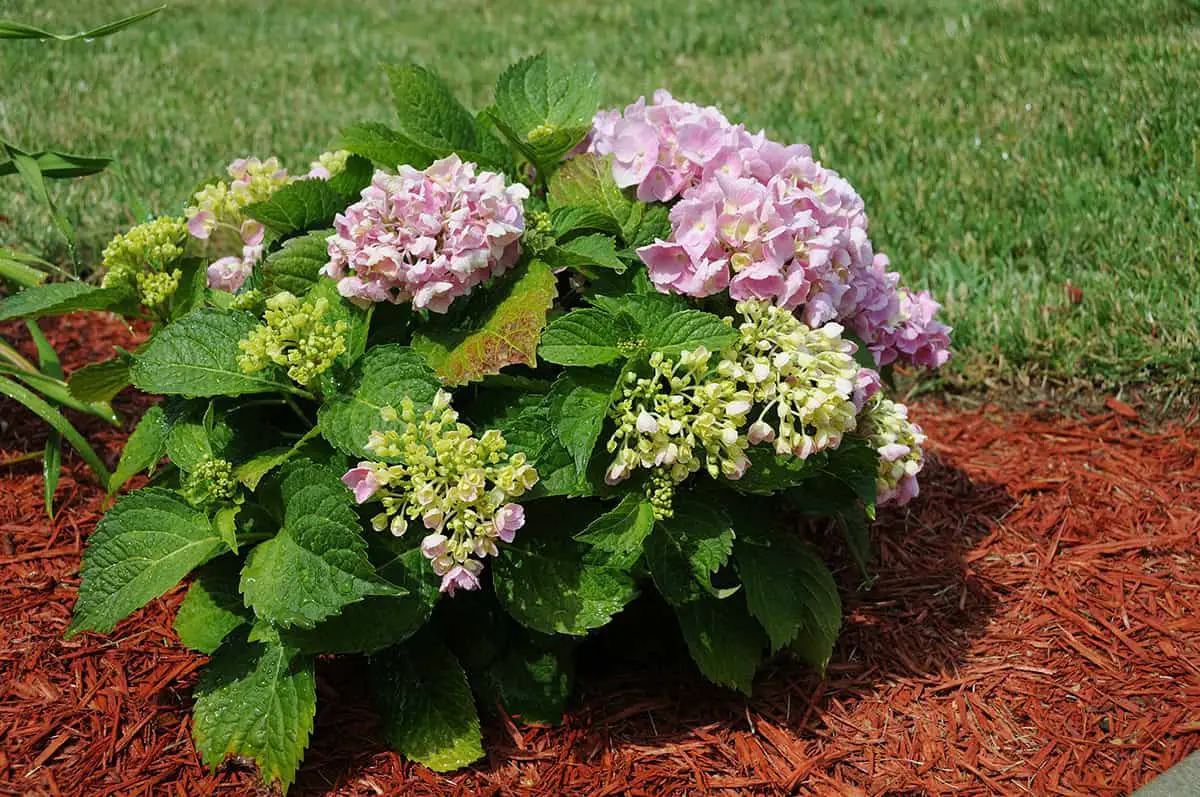
Ensuring your hydrangeas bloom throughout the season requires consistent watering and effective mulching techniques. These practices keep the soil moist and protect the plants from extreme temperatures.
Watering Schedule
Hydrangeas thrive with regular watering, especially during dry periods. You need to provide enough moisture so that the soil stays damp but not soggy. In general, this means watering deeply once a week, with each plant receiving about one inch of water. Monitor your hydrangeas for signs of wilt, especially in the afternoon heat. If they recover by the next morning, the plants are adequately hydrated. Check the soil before watering to ensure it’s not already moist, as overwatering can lead to root rot.
Proper Mulching Techniques
Applying mulch around your hydrangeas helps to maintain soil moisture and regulate temperature. Use organic material like bark, which keeps the soil cool and conserves water without overheating the soil as gravel or black plastic might. Spread a layer of 2 to 3 inches around the base, taking care not to press it directly against the stems, as this can cause decay. Replenish the mulch as needed, especially before the summer heat intensifies.
Fertilization Strategy
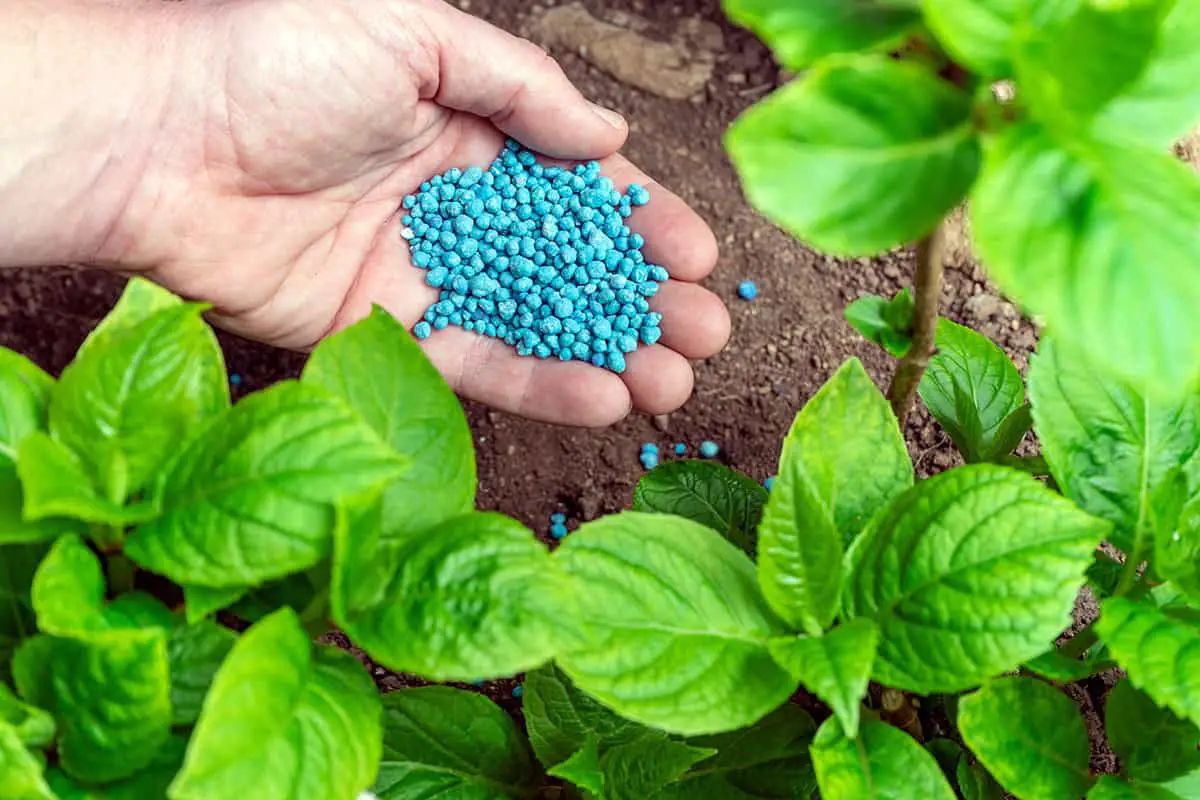
Your hydrangeas will bloom throughout the season with a well-planned fertilization strategy. This involves selecting the right products, timing fertilizer applications correctly, and using the best methods to apply.
Choosing Fertilizers
Select a fertilizer carefully for your hydrangeas. Products low in phosphorus encourage blue blooms, while those with balanced nutrients suit most other types. For example, a formula marked as 12-4-8 is typically recommended for blue hydrangeas.
Fertilization Timing
Fertilize in spring as growth resumes and again in early fall. It’s essential not to over-fertilize since that can reduce blooming. Research suggests that hydrangeas may bloom better if they’re not fed too often.
Application Methods
Incorporate dry fertilizer into the top 2-3 inches of soil. It’s important to water the soil after applying to help distribute the nutrients. Avoid getting fertilizer on the leaves, as it can burn them.
Pruning for Growth
Proper pruning encourages your hydrangeas to thrive and bloom throughout the season. It’s a key element to ensuring abundant flowers and a healthy plant.
When to Prune
Annabelle and other hydrangeas that bloom on new wood should be pruned in the spring before new growth begins. Pruning species like panicle and smooth hydrangeas involves removing up to half of the total mass, ensuring that the coming season brings full blooms. Pruning at the right time helps your hydrangeas produce new wood, which is crucial for this season’s flowers.
Pruning Techniques
Effective pruning techniques vary by hydrangea species. For bigleaf and mountain hydrangeas, cut back to about 12 inches above the ground. Oakleaf varieties can be left taller. Always make clean cuts above a bud to promote healthy new branches. The University of Minnesota Extension offers visual guidance on heading cuts, which should be about 1/4 inch above a bud. These techniques help to direct growth and foster a sturdy framework for blooms to develop.
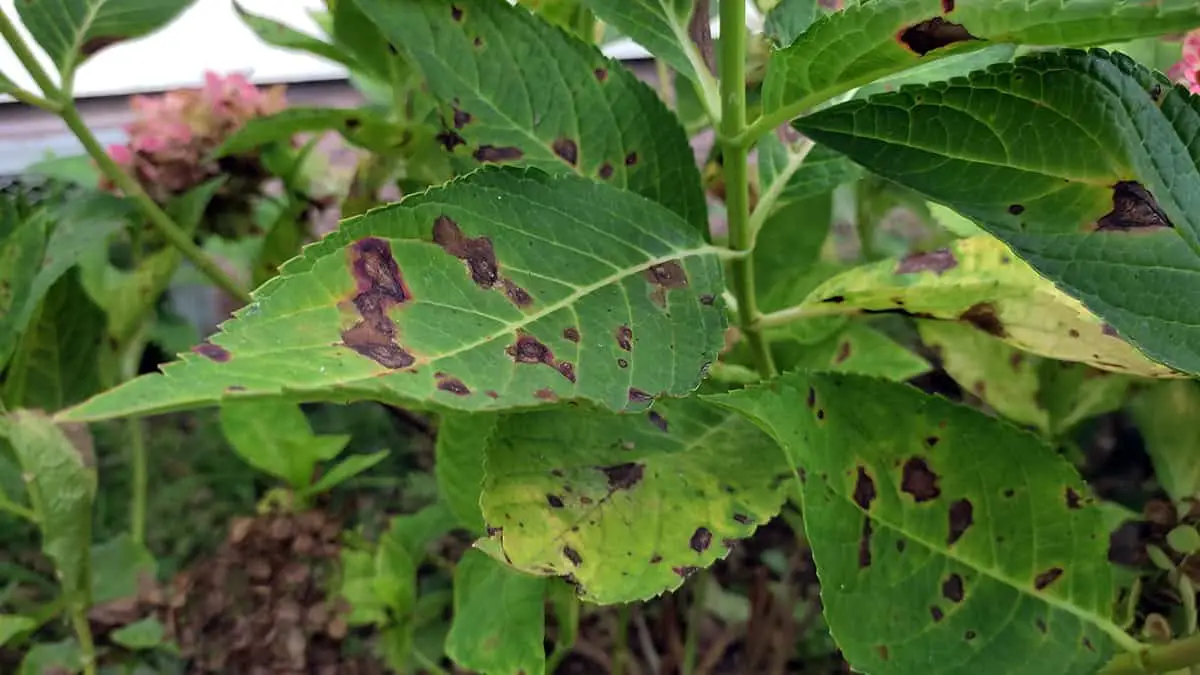
To ensure your hydrangeas bloom throughout the season, effectively managing pests and diseases is essential. Vigilance and timely action can prevent common issues that may otherwise hinder flowering.
Common Pests
Your hydrangeas may fall prey to insects such as aphids, spider mites, and slugs. Aphids sap nutrients from tender shoots, while spider mites damage leaves, creating a stippled appearance. Slugs tend to chew on leaves, leaving irregular holes behind. Regularly inspect your plants for these pests, paying close attention to the undersides of leaves and near the base of the plant.
Disease Prevention
Fungal diseases like powdery mildew and leaf spot are common culprits that affect the health of hydrangeas. Good air circulation and keeping foliage dry are fundamental steps in disease prevention. Avoid overhead watering to minimize moisture on leaves. Clear away debris and fallen leaves from around your plants to reduce the chance of fungal spores spreading.
Treatment Options
When managing diseases, removing affected plant parts and applying fungicides can be effective. For pests, insecticidal soaps or neem oil offer a solution. Always follow the instructions carefully when using any treatment products.
Encouraging Reblooming

To ensure your hydrangeas bloom all season, proper care involving deadheading and ensuring continuous growth is crucial. These steps help promote a healthy re-blooming cycle.
Deadheading
Remove spent flowers from your hydrangeas to encourage new blooms. This process, known as deadheading, directs energy towards flower production. For the Endless Summer® variety, snip the faded blooms above the first set of large leaves. This technique promotes reblooming and improves the plant’s appearance.
Ensuring Continuous Growth
Hydrangeas need consistent moisture and fertile soil to continue growing. In hot, dry periods, water your hydrangeas deeply once a week. Apply a balanced fertilizer in spring and mid-summer to support growth. Prune correctly, depending on if your hydrangea flowers on old or new wood. Trim panicle and smooth hydrangeas, which bloom on new wood, by removing up to one-third of the total mass. This encourages vigorous growth and more flowers.
End-of-Season Care
To ensure your hydrangeas bloom throughout the season, end-of-season care is crucial. This care sets the stage for dormancy and protects your plants during the colder months.
Preparing for Dormancy
As autumn advances, your hydrangeas need preparation for dormancy. It’s essential to stop fertilizing by late summer to prevent new growth that could be damaged by frost. Allow your plants to harden off naturally. This process strengthens them for winter.
Winter Protection Strategies
In regions with harsh winters, protecting your hydrangeas is vital. For ENDLESS SUMMER Hydrangeas, avoid pruning as they bloom on old wood. Instead, insulate the base with mulch or leaves after the first frost to shield the buds. For hydrangeas that bloom on new wood, like Annabelle, pruning in spring is acceptable and encourages growth.
